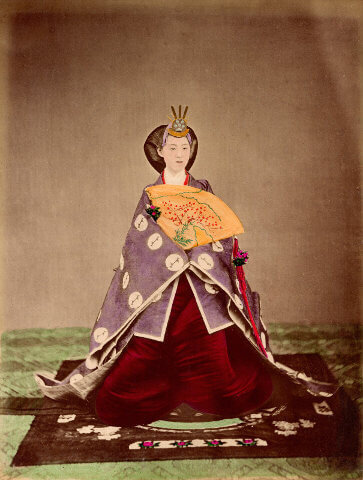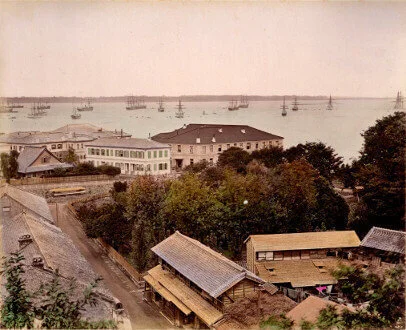Meiji Restoration
(明治維新 Meiji Ishin) 1868 - 1912
The political revolution in 1868 brought about the demise of the Tokugawa shogunate thus ending the Edo period. Control of Japan was then returned to imperial rule under Mutsuhito, the Emperor Meiji. After 200 years of isolation, Japan opened its doors to the west in 1854. Shortly after a remarkable new invention was introduced capturing the transformation in stunning detail. Japanese traditions and culture fired the imagination of western audiences through the introducton of photography.
Uchida Kuichi is famous for his photographs of the Meiji Emperor and Empress becoming the first photographer allowed to photograph the Emperor in 1872. These albumen prints were later used as official public portraits.
Meiji Emperor (明治天皇)
1852-1912
photographed by Uchida Kuichi, 1872
At the time of Meiji's birth in 1852, Japan was an isolated, pre-industrial, feudal country dominated by the Tokugawa shogunate and the daimyōs, who ruled over the country's more than 250 independent domains. By the time of his death in 1912, Japan had undergone a political, social, and industrial revolution at home and emerged as one of the great powers of the early 20th century.
Empress Shōken (昭憲皇后)
1849-1914
photographed by Uchida Kuichi, 1873
From 1886, the Empress and her entourage wore only Western style clothes in public. In 1887, she issued a memorandum on the subject declaring that traditional Japanese dress was not only unsuited to modern life, but that Western style dress more closely resembled clothes worn by Japanese women in ancient times than the kimono.
Yokohama harbour
A WESTERN INFLUENCE
After the Meiji Restoration of 1868, the port of Yokohama was developed for trading primarily in silk with Great Britain. Western influence had contributed to the establishment of Japan's first railway and newspaper with Yokohama becoming the home of Japan's first photographic studios producing hand-painted Japanese prints.
Gion machi, Kyoto, Japan
OLD JAPAN IN CONTRAST
Outside of the major cities, Japan remained largely unchanged. The isolation of Japan only a decade before preserved a rich Japanese traditional culture in its ancient cities, villages and temples. Japanese and European photographers captured the striking contrast between Japan’s tradition and an emerging modern power.




